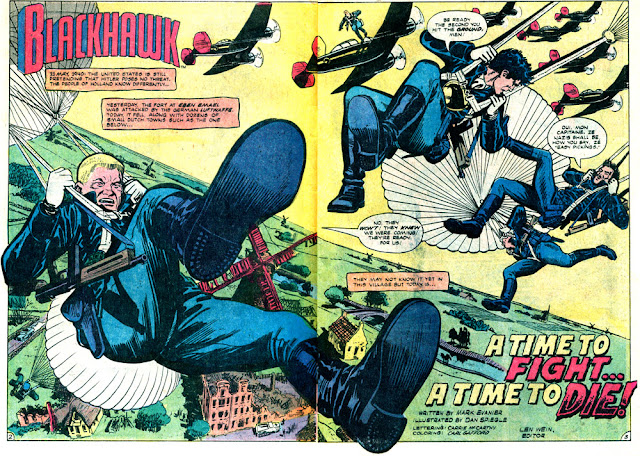For me, the
Quality Companion began online as an extension of my site,
Cosmic Teams!
After years after years of Justice League and Legion craziness, my obsession with the DC Comics super-teams led me to a deeper appreciation of the Justice Society, and then into the entire Golden Age of comics. For a DC fan, this extends into the other properties now owned by the company: Fawcett Comics and Quality Comics.
I began covering those heroes cursorily, including skeleton data, and gradually came to realize that the characters of Quality Comics would make a great new "module" on my site. The more I dug, the more obscure heroes I found. I quickly realized that such a project would be gargantuan (perhaps even larger than the site itself, which took over 10 years to grow to its current state).
So I emailed
Roy Thomas. As editor of
Alter Ego, he was the face (to me) of
TwoMorrows. Roy told me that yes indeed, they had contemplated doing a book about Quality, but they needed some key elements to bring it together. I volunteered.
Then... silence. (I later learned represented the time for which it took for TwoMorrows to secure the go-ahead from DC. It seems that publishing a book is more delicate than a fanzine).
About a year later—precisely one week after I'd moved from self-employment back into a full-time job—the message came to my inbox: Publisher
John Morrow asked was still game to do that book? Heck yeah!
What followed was an unquantifiable journey that consumed every ounce of my free time for an entire year. I read every single available Quality super-hero story (available from the
DCM), I researched at the library, and I wrote. And I wrote. Several delayed deadlines later, the tasks
continued to mount. Along the way, the book's original designer was forced to back out, and being a publications designer myself, I was eager to do
my own book. While that might not have been the right decision for my sanity, it's resulted in a product for which I'm fully accountable.
Jim Amash, my co-author, provided invaluable assistance as editor and consultant. Simply put, he is the deserved co-author of the book because his material (originally published by
Alter Ego) provides the entire backbone of my narrative. I was allowed free reign with his material (and the artwork published with it). Jim's work, in the form of interviews, is cited throughout the book but I needed to reconfigure it into a series of stories. Basically, I took all of his text out of
Alter Ego and broke it into usable bits, copy/pasted it into chronological and thematic skeletons, and then wrote and researched around it.
The
Quality Companion leaves out scads of details that can be found in Jim's original interviews. I hope that fans will seek them out, as they are colorful accounts of the Golden Age of comics. A list is provided in the Bibliography of the book, and
reprinted here.
I'll be posting other things that didn't make the cut here. I've created lots of databases, charts and spreadsheets for which we had no room.
The Quality Companion is the tip of the iceberg. The Quality Companion
Companion will keep the story alive.




















